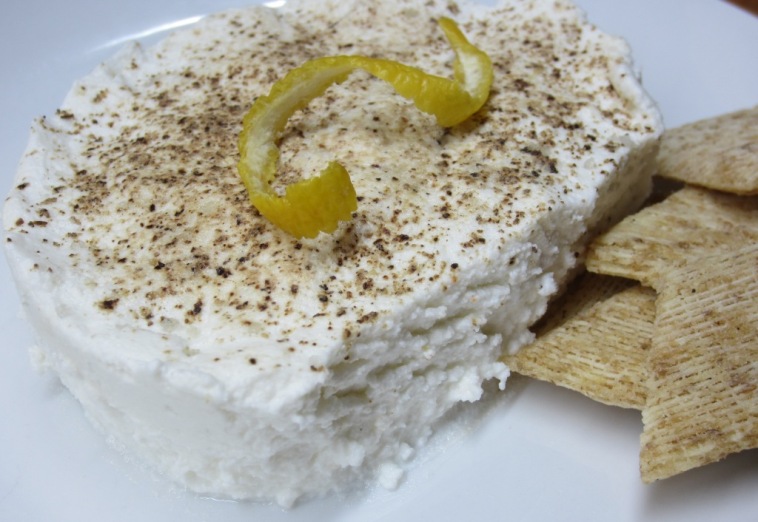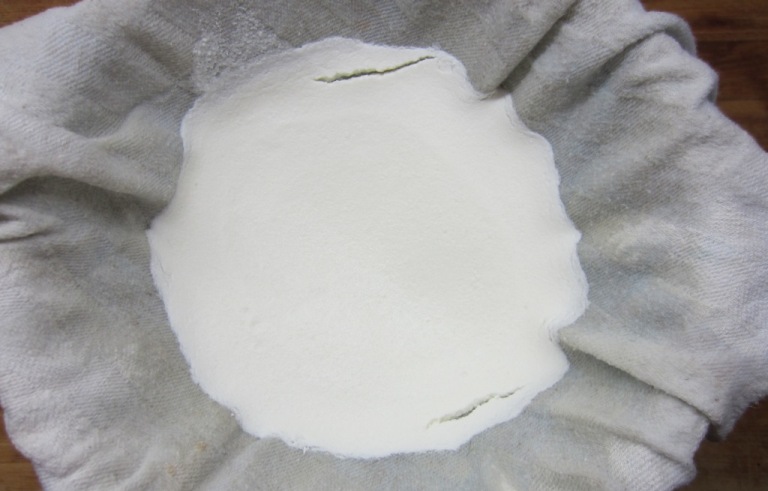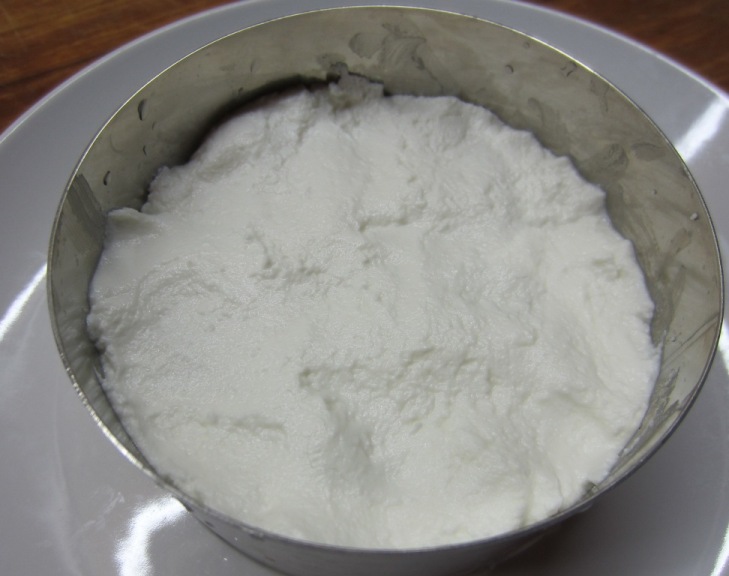My neighbourhood Megamarket tries hard to appeal to fringe food types like myself. They have a ‘natural foods’ section despite the skeptical local attitudes towards quinoa and nutritional yeast. But this lack of local enthusiasm means their well-meaning dairy and fresh section often goes unsold. Their policy is to slap ‘50% off’ stickers on everything that’s going to soon spoil and that means a huge bounty for me. The organic sour cream alone is miles beyond the junk in the mainstream dairy section and with the discount, cheaper too. Ditto for free-range eggs, tofu, and importantly for today’s topic, goat’s milk.
I don’t really care for the taste of goat’s milk on its own. It’s far too ‘goaty’ for me in all but the most savoury of quiches. But take that same litre heated with a bit of acid and bingo pyjama, you’ve got yourself amazing fresh goat cheese that I could eat all day long. One litre of full fat (3.25%) milk will cost me about two bucks on sale and yields roughly 200g of goat cheese with about five minutes hands-on effort. That works out to about a third the price of the cheapest ready-made chèvre here in my neighbourhood with the added bonus of a goodly amount of whey that can be used elsewhere*. Experiments with forming and aging longer term have thus far proven promising if only I could keep from eating the whole batch before it has time to mature.
* Lemon biscuits, scones, & waffles made with some amount of ‘acid’ whey are deliciously tart for example. Steel cut oats cook in whey well too. You can even get round two of cheese by cooking it into a batch of ricotta. The net is loaded with other uses for whey but for country folk like me, remember not to pour it down your drains because it can damage your septic eco-system. Diluted considerably I hear it makes a good fertilizer but uncut it can ‘burn’ plants.
The process is as simple as making tea. Sterilize a stainless steel (non-reactive) pan, a long stirring spoon, any measuring devices, and a fine mesh strainer with boiling water. Gently and evenly warm that litre of cold goat’s milk over no more than medium heat to 83C (182F) being careful not to go over this temperature lest you break down the proteins that will make curds. Sneak up on it rather than charging to the thermo finish line. Remove from heat, add 60ml (1/4 cup) of plain white vinegar, and stir well to distribute evenly. Fresh lemon juice can be used instead as long as your intended recipe won’t mind a slight residual lemon taste.
Allow to sit undisturbed for fifteen minutes then decant into the strainer lined with proper cheesecloth or a thin tea towel, either of which you’ve also remembered to sterilize. Collect the whey that drains off for other uses or proper disposal. After about half an hour most of the liquid will be separated and you can gather the corners of your cheesecloth for one last squeeze. Don’t be tempted to remove every last drop unless you want a particularly dry texture to the finished cheese.
The curds when using vinegar or lemon juice as a coagulant are minuscule compared to methods employing rennet but never fear. When you drain them of whey they will accumulate into a useful little blob. Generously salt and otherwise stir flavour into that lump of white gold to your tastes with everything from peppercorn to sage and honey to chile. Any flavour whim of the day that can stand up to the punch of fresh goat seems to work. Park it in the fridge to chill for at least a few hours either lightly packed into a ring or loose in a bowl before devouring the whole lot. Pouches formed from radicchio leaves and filled with fresh goat cheese and toasted pine nuts can be sauteed briefly in garlic-laced olive oil for one of my favourites. Don’t be gentle with the peppercorn there.
This method is best for fresh versions that will ‘mature’ and be consumed within a few days. A short time in the fridge, especially if you’ve added other flavours, will benefit the final taste greatly. If you’re aiming for aged chèvre, you’ll probably want to pursue those methods with rennet and starter cultures. They aren’t that much more difficult but usually need more care towards sterilization and procedure than this quick approach.



